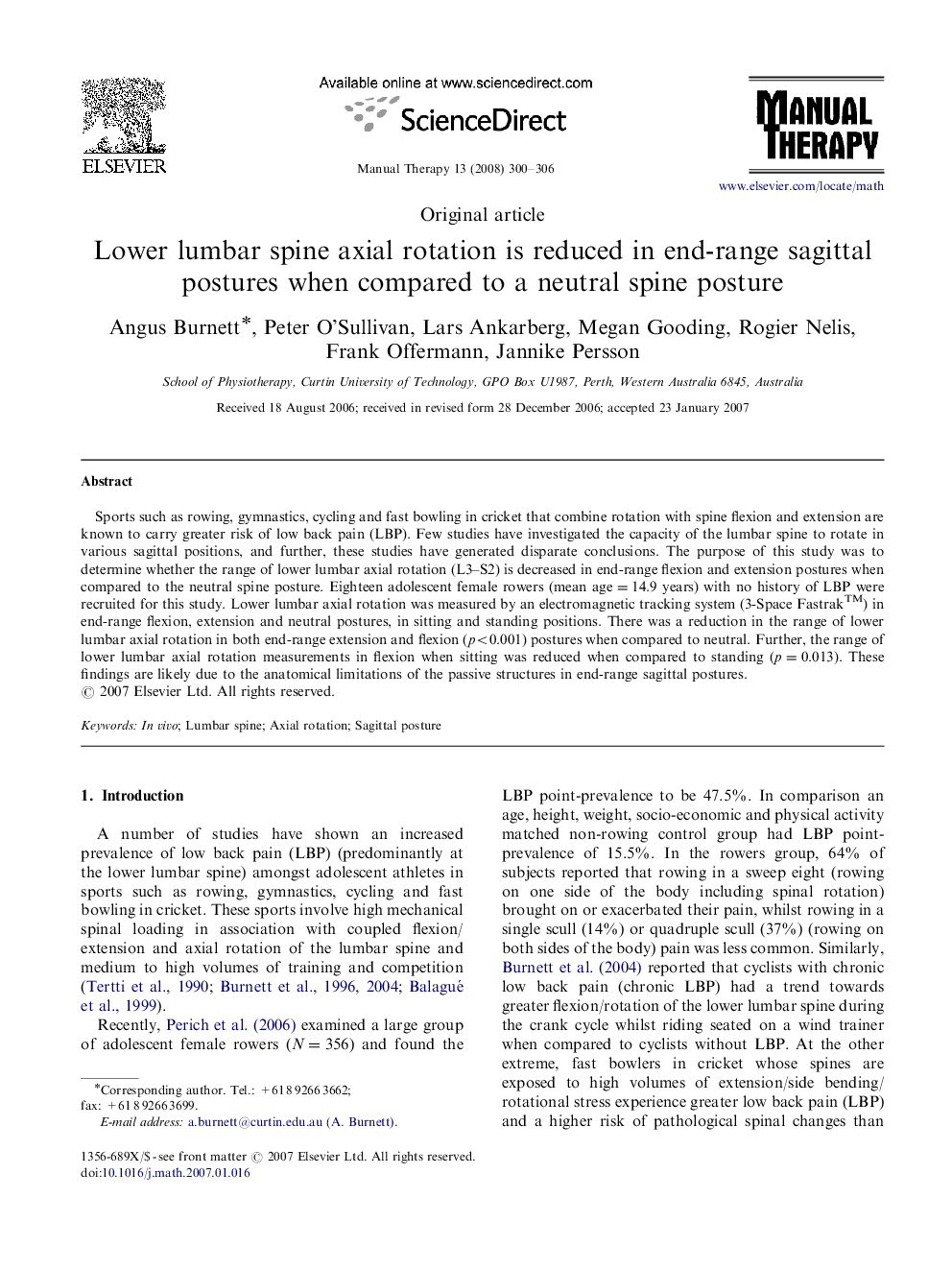| Article ID | Journal | Published Year | Pages | File Type |
|---|---|---|---|---|
| 2626031 | Manual Therapy | 2008 | 7 Pages |
Sports such as rowing, gymnastics, cycling and fast bowling in cricket that combine rotation with spine flexion and extension are known to carry greater risk of low back pain (LBP). Few studies have investigated the capacity of the lumbar spine to rotate in various sagittal positions, and further, these studies have generated disparate conclusions. The purpose of this study was to determine whether the range of lower lumbar axial rotation (L3–S2) is decreased in end-range flexion and extension postures when compared to the neutral spine posture. Eighteen adolescent female rowers (mean age=14.9 years) with no history of LBP were recruited for this study. Lower lumbar axial rotation was measured by an electromagnetic tracking system (3-Space Fastrak™) in end-range flexion, extension and neutral postures, in sitting and standing positions. There was a reduction in the range of lower lumbar axial rotation in both end-range extension and flexion (p<0.001) postures when compared to neutral. Further, the range of lower lumbar axial rotation measurements in flexion when sitting was reduced when compared to standing (p=0.013). These findings are likely due to the anatomical limitations of the passive structures in end-range sagittal postures.
